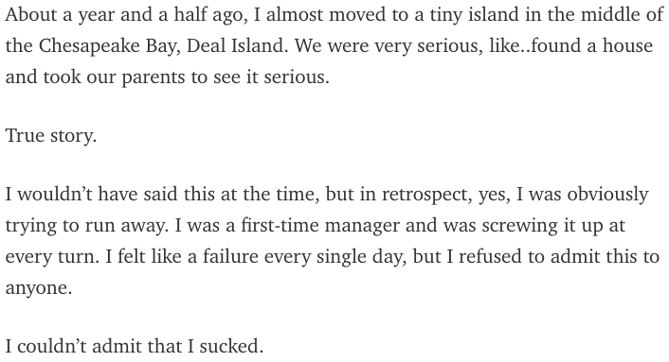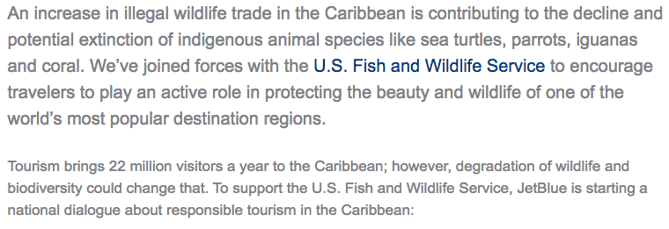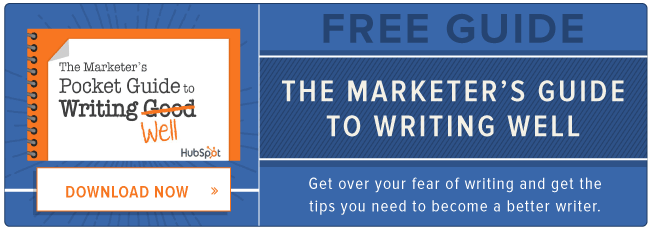
Blink. Blink. Blink. It's the dreaded cursor-on-a-blank-screen experience that all writers -- amateur or professional, aspiring or experienced -- know and dread. And of all times for it to occur, it seems to plague us the most when trying to write an introduction.
I mean, you already have a blog post you want to write. Can't you just dive in and write it? Why all the pomp and circumstance with this dag-blasted introduction?
Here's the thing -- intros don't have to be long. In fact, we prefer them to be quite quick. They also don't have to be so difficult, but they do have to exist. They prepare the reader and provide context for the content he or she is about to read. 
Let's break down exactly how to write an introduction that's short, effective, and relatively painless. And if you're ever having trouble churning out those intros, come back here and re-read this formula to lift yourself out of that writing rut.
How to Write an Introduction
To write an introduction, be mindful of what it's supposed to achieve. The main goals here are to draw in your reader -- a relative stranger, most of the time -- and concisely let her know what the article is about. Generally, that consists of three key components:
Step 1) Grab the reader's attention. That looks different for every piece of writing, but we've provided some suggestions below.
Step 2) Present the reason for the post's existence.
Step 3) Explain how the post will help address the problem that brought your reader to it.
As a lover of all things meta, I will, of course, use this post's introduction as an example of how to write an intro. It contains different components that create the above introduction "formula," which you can refer to that when you get stuck with your own.
Below, we've gone into more detail on each component.
The Introduction Paragraph
1) Grab the reader's attention.
There are a few ways to hook your reader from the start. You can be empathetic ("Don't you hate it when...?"), or tell a story, so the reader immediately feels some emotional resonance with the piece. You could tell a joke ("Ha! This is fun. Let's read more of this."). You could shock the reader with a crazy fact or stat ("Whoa. That's crazy. I must know more!").
For this intro, I went the "empathetic" route.

Writer's block stinks. Blank screens and taunting cursors -- the worst. Who's with me?
2) Present the reason for the post's existence.
Your post needs to have a purpose. The purpose of this post is to address a specific problem -- the pain in the butt that is writing intros. But, we have to do it, and therein lies the approach to something important: making writing introductions easier.

Just because you know the purpose of your post, doesn't mean the reader does -- not yet, anyway. It's your job to validate your post's importance and give your audience a reason to keep reading.
3) Explain how the post will help address the problem.
Now that the reader is presented with a problem that he or she can relate to -- and obviously wants a solution -- it's time to let the audience know what the post will provide, and quickly.
In other words, the introduction should set expectations. Take this post, for example. I don't want the reader to dive in and expect to see a list of reasons why introductions are important. I want you to expect to read about what makes a good introduction. But if I hadn't clarified that in the introduction, you might have expected the former. After all, be honest -- did you skim over or forget the title of this post already? That's okay. That's why we tell the reader exactly what the post will provide, and why it's valuable.

The underlined sentenced is a way of saying, "Keep reading." We already established that there's a problem -- here's how I'm going to make it easy for you to solve.
Of course, there are other valid ways to write introductions for your marketing content -- don't feel the need to follow this formula for every single piece of content, as some are more casual than others. But, this guide should help provide a solid framework to follow if you're just getting started, or if it's just one of those days when the words aren't flowing.
But what are some examples of great introductions in the wild? We thought you might ask -- which is why we picked out some of our favorites.
5 Introduction Examples
1) "Confessions of a Google Spammer," by Jeff Deutsch

There are a few reasons why we love this introduction. Immediately, it grabs our attention -- how the heck did this guy make fifty grand every month? And just from 10 hours a week?
But unlike some spammy comments that might contain a similar sentiment, he almost immediately serves us something unexpected -- he tells us not to do that.
Then, he states the true purpose of the blog -- to explain why we should "never, never ever follow in [his] footsteps." In just three sentences, this introduction has captivated us and validated the story's existence with a looming life lesson. The takeaway? Keep it short, but powerful.
2) "Announcing the public preview of Azure Advisor," by Shankar Sivadasan

Here's a great example of an introduction that presents a problem and a solution to it. Sure, it's easy to build apps on Azure, Microsoft's cloud platform -- but maybe you had some issues with its setup. Well, wouldn't you know? Azure Advisor is here to address those challenges, and you can preview it for free.
But wait -- there's more. The introduction not only immediately presents a problem and a solution, but it concisely summarizes just how this product provides a fix. And, it explains why the text will be helpful, with the sentence, "In this blog post, we will do a quick tour of Azure Advisor and discuss how it can help optimize your Azure resources."
That's a best practice for brands that have made a mistake -- even a small one. Technology is great, but it can come with bugs. That's where an intro like this one can be so helpful. It acknowledges the problem, states what the brand has done to address it, and alerts the reader to continue to learn how that solution will work.
3) "Taste the Season at Sushi Sora," by Chris Dwyer

Strong introductions aren't just important for blogs -- they're essential to quality editorial pieces, too. That's why we love this introduction to an article from Destination MO, the Mandarin Oriental's official online magazine.
Remember that thing we said about a captivating start? In addition to being empathetic or funny, visuals can be huge -- not just an actual picture or video, but words that actually help the reader envision what you're describing. This introduction does just that, with expressive phrases like, "the magical silhouette of Mount Fuji on the horizon." Well, yeah. That does sound magical. But where can I go for such a view? None other than the "Mandarin Oriental, Tokyo," the author tells me, especially "from the sushi counter at Sushi Sora."
Here's the thing about this intro -- it gives the reader something to aspire to. We've briefly discussed aspirational marketing before, but this instance is one where it can be used in a brief introduction. After reading this first paragraph, I want to go to Tokyo. And when I'm there, I want to stay at the Mandarin Oriental. Then, I want to take in the views from its high-end sushi restaurant.
With just two sentences, I've gone from reading an article with my morning coffee, to fantasizing about a thousand-dollar vacation. So whenever possible, use your introduction to paint a picture, and to help your reader dream.
4) "The Secret Club of Admitting You Suck," by Janessa Lantz

Let's read through this introduction from ThinkGrowth.org together.
I should know: I once moved very far away to escape my own failure, too. But I couldn't admit at the time that I sucked, either. Wow, Janessa Lantz really gets me.
See that? That, right there, is a resounding example of how empathy makes a profound introduction. But how did the story end? Did they buy the house? Did she admit that she sucked? Does she still suck? (Spoiler alert: I work with Janessa and can say, with great confidence, that she is far from sucking.)
The point is, I wanted to keep reading for two reasons -- first, I related to the author. Second, it was just plain interesting, and it left me with a cliffhanger. It's okay to tease your readers. Just make sure you ultimately give them what they're seeking.
5) "Be a responsible tourist: a PSA from the U.S. Fish and Wildlife Service," by Out of the Blue

I'll admit it -- I'm a sucker for a good travel blog, which is why JetBlue's official blog appeals to me. But at the same time, I also geek out for almost anything that promotes sustainability. In this piece, those worlds collide.
What makes this introduction work? Honestly, it's scary. "Decline" and "extinction" are strong words, and absolutely present a problem. But research shows that we're actually more inclined to keep reading bad news -- in fact, a few years ago, our media consumption habits suggested that we prefer it.
But it's not all bad -- and JetBlue quickly turns around a potentially devastating situation with the language of this introduction. And, it includes the reader, by inviting travelers to be part of the solution, but joining the brand in its promotion of responsible tourism.
That's another formula for presenting bad news to your audience, especially if you're not the one causing it and you have a solution. Scary information + how you're helping + how the reader can do his or her part = compelling intro.
Let's Start
Feeling inspired? Good. Next time you find yourself face-to-face with the dreaded blinking cursor, use these resources and compelling examples to find motivation.
How do you write a good intro, and what are some of your favorite examples? Let us know in the comments.
Editor's Note: This post was originally published in September 2013 and has been updated and for freshness, accuracy, and comprehensiveness.


No comments:
Post a Comment